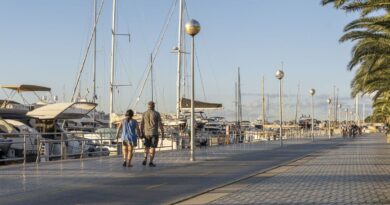The European country with whopping 12 time zones | World | News
Given the size of Russia at 6.6 million square miles, equivalent to 11 percent of the total world’s landmass, or of the United States, with 3.8 million square miles, one might expect one of these to hold the world record for the most amount of time zones.
However, that record is held by a European country that is 31 times smaller than Russia and is roughly the same size as Texas – France.
The total land area of France is approximately 213,011 square miles, making it the largest country in the European Union and the third largest country in Europe after Russia and Ukraine. It is home to around 67 million people.
Yet, combine this with its overseas territories which make up just over 46,000 square miles, France is actually over 256,000 square miles.
France counts over 12 overseas territories, including the French Polynesia, Guadeloupe, Saint-Martine, Martinique and Réunion. With this number spread across the world, France actually covers 12 time zones.
Overseas France includes island territories in the Atlantic, Pacific and Indian Oceans, a section of the South American continent and several peri-Antarctic islands as well as claims in Antarctica.
Metropolitan France operates on Central European Summer Time (GMT+2), while its dependencies range from Tahiti Time (GMT-10) in French Polynesia to Wallis and Futuna Time (GMT+12) in the South Pacific, according to Guinness World Records.
When Daylight Saving Time is observed in Saint Pierre and Miquelon, this actually takes the total to 13.
France also holds the title of the world’s longest domestic flight – between Paris and Papeete in Tahiti – a distance of 9,765 miles. Other long domestic flights from Paris include St Denis, Reunion in the Indian Ocean (5,809 miles), Cayenne, French Guiana (4,401) and Fort de France, Martinique (4,259) as destinations.
Russia and the US are in second place when it comes to the country with the most time zones. Both count 11 time zones, although two of the US zones – GMT-12 for Baker Island and Howland Island in the central Pacific and UTC=12 for research bases on Antarctica and Wake Island in the Pacific – are unofficial.
Most of Overseas France is the remnants of the French colonial empire that remained a part of the French state under various statuses after decolonisation. Most of these territories, but not all, are part of the EU.
“Overseas France” is a collective name used in everyday life in France, but it is not an administrative designation. Instead, five overseas regions have the same administrative status as the 13 metropolitan regions (including French Guiana and Guadeloupe), five overseas collectivities are semi-autonomous (including French Polynesia and Saint Martin) and New Caledonia is an autonomous territory.
2.8 million people lived in overseas France as of January 2024, accounting for 4.1 percent of the population of the French Republic. Most of these residents are citizens of France and also citizens of the EU. This means they are able to vote in both French and European elections.
The French Constitution provides that, in general, French laws and regulations (including France’s civil and penal codes, administrative law and social laws) apply to French overseas regions just as in metropolitan France, but can be adapted as needed to suit the region’s particular needs.




